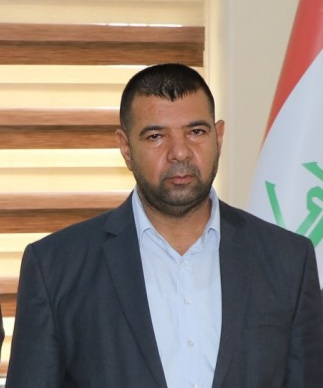
أ.م.د عماد حايف سمير
Descriptive Linguistics Verse Generative Linguistics (TGG)
علم اللغة الوصفي ومعاكسه علم اللغة التوليدي
أ.م.د عماد حايف سمير
Before talking about descriptive linguistics, it is necessary to talk about historical linguistics which is characterized by four main stages. The first stage is that of Plato who was the first one who distinguished between noun and verbs. The date of 1786 represents the second stage of this linguistics in which Sir William Jones affirmed that there is similarity among Sanskrit, Greek, Latin, Celtic and Germanic language. He stated that all these languages must spring from one common source. The third stage is that of Darwin and his famous theory of evolution “Origin of Species”. New Grammarians who said that language change is regular form the fourth stage. These stages occurred during the nineteenth century.
In the beginning of the twentieth century, the emphasis shifted from language change into language description. The person who is responsible for this change is the pioneer of descriptive linguistics “Ferdinand de Saussure” He died without having written any book about linguistics but his students published his lectures notes after his death under the title, “Course in General Linguistics”. This famous book published in 1915. It exerted a major influence on the course of linguistics. Ferdinand de Saussure’s contribution was his direct words which say the all language items are interlinked. He affirmed that language is like a game of chess. Language is a system that is carefully built stricture of interwoven elements. He initiated the era of structural linguistics. This term is sometimes misunderstood because it does not necessarily refer to a separate branch of linguistics but it means that language is a patterned system composed of independent elements, rather than a collection of unconnected individual items. The influence of de Saussure was in Europe which is matched by the influence of Bloomfield’s book ‘Language’ in America. It is published in 1933. Bloomfield considered that linguistics should deal objectively and systematically with observable data.
In 1957, the bath of linguistics took a new turning. Noam Chomsky who was 29 years old and worked as a teacher at Massachusetts Institute of Technology published his famous book ‘Syntactic Structures’. This book contains fewer than 120 but it is considered a revolution in linguistics. Chomsky in his book has shifted the attention away from describing of actual utterances and starting asking question about the nature of the system by which human beings can generate language. He criticized Bloomfieldian linguistics saying that it was both far too ambitious and far too limited in scope. It was ambitious in that it was unrealistic to expect to be able to lay down foolproof rules for extracting a perfect description of a language from a mass of data. It was limited because it is concerned with describing language without paying any attention to the way by which the elements of the sentences can be produced. He insisted on the idea that grammarians should focus not only on the description of old utterances but also on taking into account possible future utterances. He pointed out that any speaker must have internalized a set of rules which helps him to form the permitted sequences in his language. He called this set a ‘Competence’. According to him, TGG consists of two components which are as follow:
A-Transformational Rules can be manifested by four components:
1- Addition
2- Deletion
3- Substitution
4- Rearrangement
B- Phrase Structure Rules can be realized in eight rules:
1-
2-
3-
Time - Reason
4-
5- Tense either past or present
6- MV either it is verb to be which must be followed by one of the following options:
NP - place - AP
Or it is main verb which can be intransitive or intransitive
7-
8-
He mentioned the following example to clarify Transformational Rules
Ali has repaired the cars.
The cars have been repaired (by Ali)
In the above example, there is addition which is manifested by the word (been)
There is substitution manifested by the word (has and have)
There is deletion manifested by (by Ali) which can be omitted
There is rearrangement because the grammatical object becomes grammatical subject
Keywords: Historical Linguistics, descriptive linguistics, Generative Linguistics, TGG and competence
References
Bussman H 2006: " Routledge Dictionary of Language and Linguistics." Taylor &
Francis e-Library.
Trask R.L.1995: Key Concepts in Language and Linguistics. Taylor & Francise- Library.




